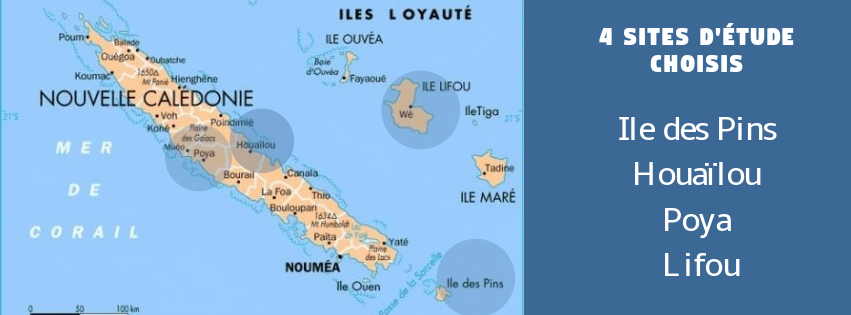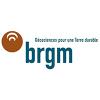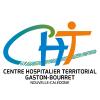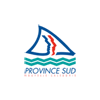NICKEL-CHROME
Fabrice Wenger-Martial Dosdane/Province sud
Ultramafic massifs rich in heavy metals like nickel (Ni) and chromium (Cr) make up nearly one third of New Caledonia. In areas where vegetation is degraded or absent, erosion processes result in the release of trace metals which are dispersed by air or by surface runoff. Nickel and chromium, including Cr6, are known for their toxicity in humans, notably causing cancers and allergies. Such trace metals may be present in creek and river waters and can contaminate drinking water catchment areas, thus constituting a potential source of exposure for communities in New Caledonia.
The NICKEL-CHROME project aims to:
• assess the role of drinking water in the exposure of populations to nickel and chromium and, more specifically, Cr6 in New Caledonia.
• propose hydrogeology-based arguments to explain the sources of exposure;
• assess the role of weather events;
• target at-risk populations.
Four research sites were selected: Isle of Pines, Houaïlou, Poya and Lifou, based on high concentrations of nickel and chromium in urine samples as recorded by the METEXPO program funded by the National Centre for Technological Research (CNRT).
Project duration 24 month(s)
Associated program

Responsable scientifique
The METEXPO program, funded by the National Centre for Technological Research (CNRT), has identified high concentrations of nickel and chromium in urine samples from New Caledonian residents, particularly in young people aged under 18 and older people aged over 60, with geographic and seasonal variations also recorded.

Photo credit IRD NC
Urinary concentrations of chromium exceeded reference values in the case of 47% of adults and 90% of children.
The most affected regions were: Kouaoua, Houaïlou, Poya, Hienghène, Touho and, unexpectedly, Lifou (no ultramafic massifs).
Urinary concentrations of nickel exceeded reference values in the case of 9% of adults and 13% of children. The most affected areas were the Isle of Pines, Belep, Houaïlou and Yaté.
In the findings set out by the METEXPO program, urinary concentrations of nickel or chromium were not explained by the proximity of mining operations. Data included in the prediction models - socio-economic and dietary data -, did not provide a satisfactory explanation of urinary trace metal concentrations.
Drinking water appeared to constitute one possible source of contamination affecting residents; contamination levels and links to urinary concentrations of nickel and chromium indicated that further study was necessary.
The main objectives of the Nickel-Chrome projects are to :
• assess, as regards the general population, levels of exposure to nickel and chromium and, in particular, Cr6, in drinking water, together with any geographic and climatic variations.
• analyse nickel and chromium concentrations in urine samples, according to gender, age, and geographic location;
• study the correlation between nickel and chromium levels in drinking water and in urine samples.
Following the results of the Metexpo program four research sites were selected for the purposes of the Nickel-Chromium project: the Isle of Pines, Houaïlou, Poya and Lifou. The choice was based on the high levels of nickel or chromium in these municipalities as recorded by the METEXPO study, and the fact that they represent each of the three Provinces, as well as the East and West coasts of the Main Island.

Sampling and analysis will be carried out at each site:
• samples of drinking water will be taken from each water catchment located in each of the sites, and from water taps belonging to each person taking part in the study of urinary concentrations of nickel and chromium;
• urinary analyses will be performed in clinics on samples provided by children or adults with a doctor’s appointment, subject to their informed consent.
This work, undertaken as part of the Nickel-Chromium project, will serve as preliminary research for a study the CNRT decided to conduct during the course of 2018. The CNRT research focus will be to achieve a better understanding of the factors involved in mobilisation of nickel (Ni) and chromium, including Cr6, in water, and to target areas where water plays a role in the presence of nickel and chromium trace metals in human urine. Public health authorities will be able to leverage the results to implement protective measures.
Four research sites were selected: Isle of Pines, Houaïlou, Poya and Lifou. Sampling began in 2018 at two sites (Houaïlou and the Isle of Pines) and will continue at two other sites in 2019 (Poya and Lifou). Given that research work began half way through 2018, sampling is scheduled to end half way through 2020.

At each research site, the Nickel-Chromium project will carry out
-- Sampling and analysis of drinking water. Samples will be taken from each water catchment within the site area and from water taps belonging to each person taking part in the study of urinary concentrations of nickel and chromium.
Samples from each catchment will be studied to determine:
o the impact of weather events in levels of trace metals in the water. A sample will be taken during the dry season and another after a heavy rainfall episode. An estimated 150 samples per research site will be collected by an environmental epidemiologist
o analysis of total dissolved nickel and chromium content (filtration at 0.45 μm) and dissolved hexavalent chromium (particularly toxic), carried out at LAMA-IRD under the supervision of a specialist in the analysis of water for trace metals.
o concentrations of nickel and chromium, carried out by the ICP-MS
o concentrations of chromium, Cr6, carried out using polarography.
-- Sampling and analysis of urinary concentrations of nickel and chromium
Research participants will be recruited at dispensaries, from amongst children or adults with a doctor’s appointment, and subject to their informed consent.
The following will be recruited at each centre :
• 30 children (3-17 years old)
• 40 adults aged 18-59 (20 men and 20 women)
• 30 people aged 60 or over.
Clinic staff will get people to fill in a general and dietary questionnaire to provide information on
• Sociodemographic characteristics
• Place of residence
• Place of work or education,
• Sources of drinking water and foods likely to contain trace metals.
Urine samples will be collected and transported to the Noumea CHT (hospital complex) via standard sample transfer channels.
An external laboratory will be in charge of assays to measure nickel and chromium levels in urine samples. The same laboratory will perform urinary creatinine assays, to ensure measurements of urinary trace metal concentrations are standardised.
Statistical analyses will be performed by environmental epidemiology consultants.
Median and quartile values for concentrations in water will be provided per site for each metal, and seasonal variations will be analysed. Concentrations in samples of tap water will be compared with samples from corresponding water catchments. Analyses of urinary concentrations of Ni and Cr will be performed and compared per research site, sex and age group. Finally, multivariate linear regression analyses will be performed to calculate the statistical relationship between nickel and chromium in tap water and in urine samples, using sociodemographic, dietary and environmental data as covariates.
Perspectives
Public health authorities will be able to leverage the results to implement protective measures. Furthermore, this study will form the basis for CHT-CNRS-IRD-BRGM DIMENC collaborative research work on the mobilisation of Ni and Cr6 trace metals in water, the research topic chosen for the next CNRT call for projects, and for targeting specific areas for advance field work.
The workshop of the programm "Au fil de l'eau" took place on 17 and 18 September 2019, at the UNC.
Tuesday 18 September was dedicated to the intermediate results of the "Au fil de l'eau" program (whose presentation is available on the french's page of the project). This restitution day was an opportunity to exchange on the various projects that make up the program, between research professionals, actors from the public, private and associative sectors working on these themes.
Les 28 et 29 mars 2022, le CRESICA organisait le séminaire "Au fil de l'eau" qui a permis de présenter les résultats du projet.
Rapport final : projet NICKEL-CHROME
Visionnez la présentation faite lors du séminaire grâce à la video du projet NICKEL CHROME par F. Baumann.
















